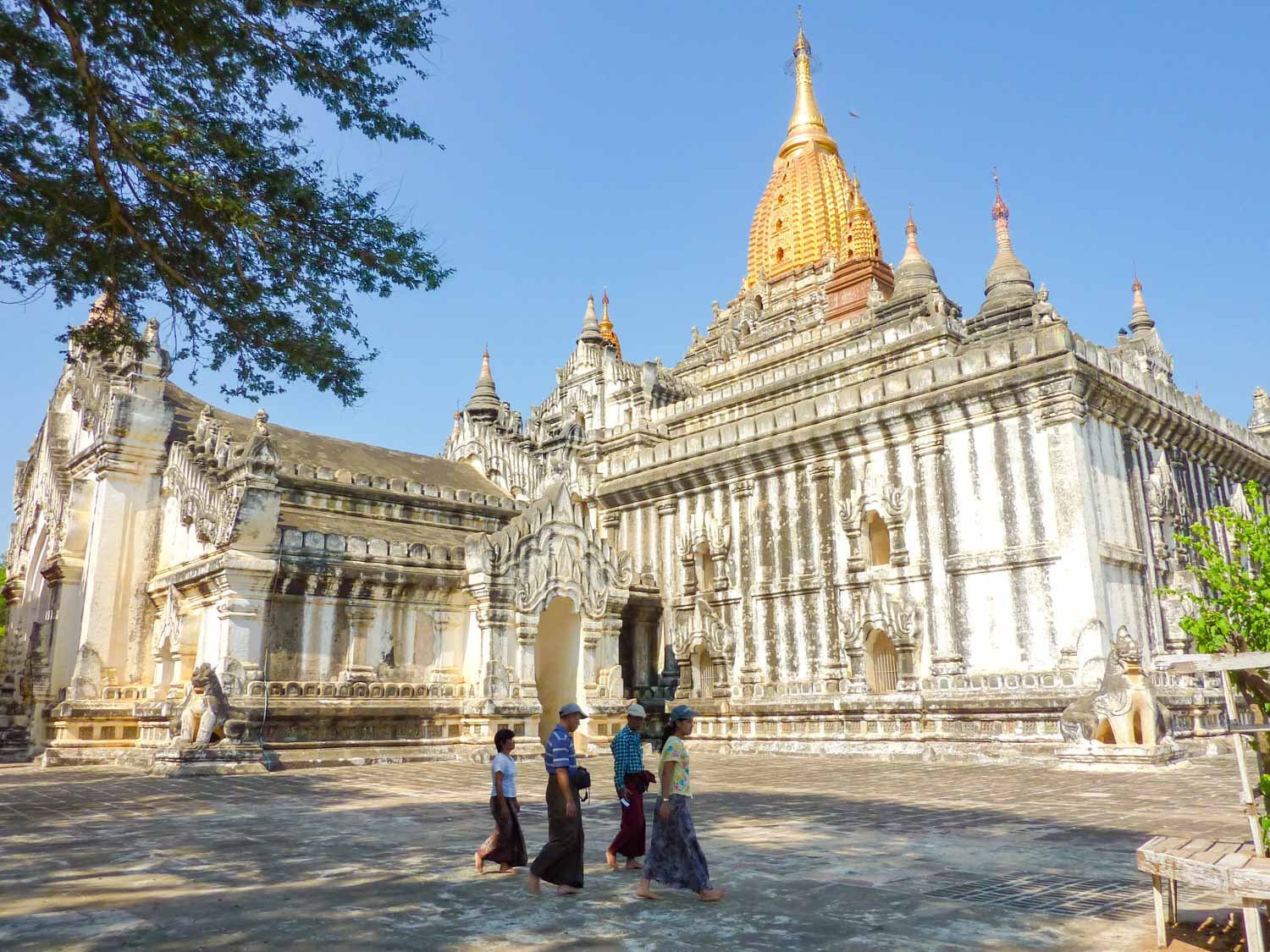Ananda Temple
Ananda temple is the grandest of all the temples in Bagan. It dates from about 1105, attributed to King Kyanzittha. Architectural prototypes of this style can be found at Paharpur in Bengal and at the Lai Mai ridge also in Bengal, so it’s likely that Indian builders were hired to construct this temple. Its symmetrical ground plan and four entrance halls with equally sized four enshrined Buddhas (Buddha Kassala, Buddha Gotama, Buddha Kakusandha and Buddha Konagamana. It may have been called Nanda in the beginning (no one knows) after a legend that King Kyanzittha emulated the Nandamula Cave in the Himalayas when he designed the temple. Ananda Temple is perfectly proportioned, inspired as was other great architecture of the period.
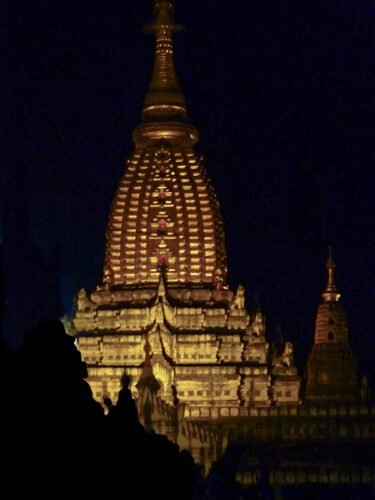
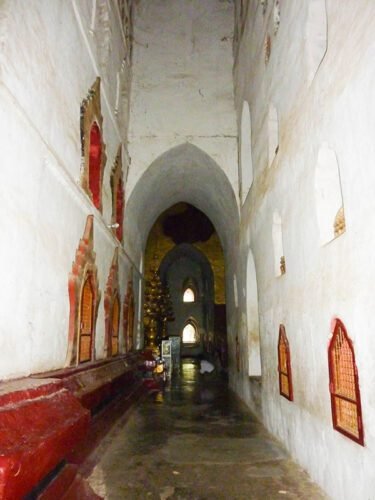
Corridor with stone sculptures depicting Buddha’s life based on 5th or 6th century Pali text, Nidanakatha (or later works from this source). There is a corridor like this on all four sides.
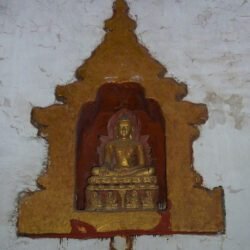
All along the corridors are panels depicting the Buddha’s life.


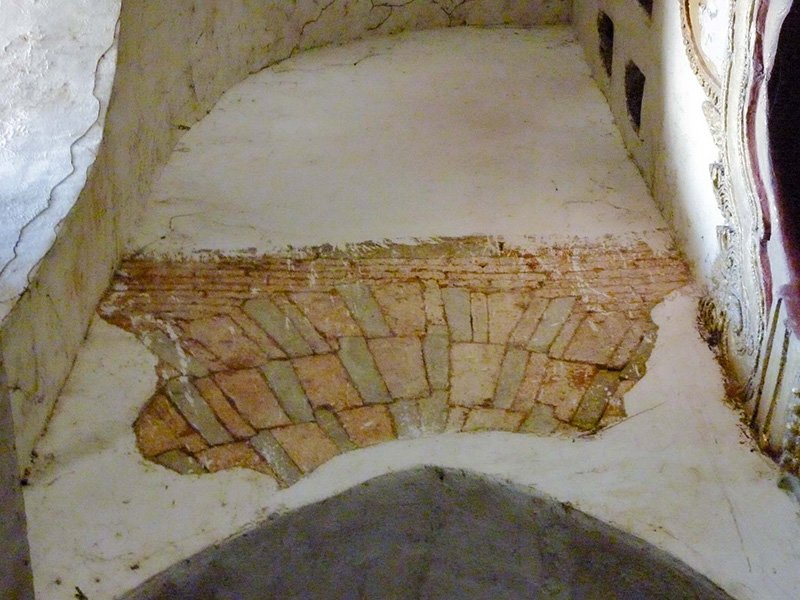
Exposed stone and brick voussoirs, inner corridor
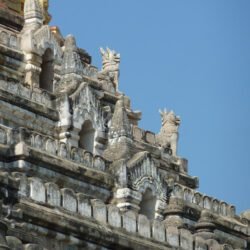
Ananda Temple – glazed jataka tiles in niches with guardian Lions on roof
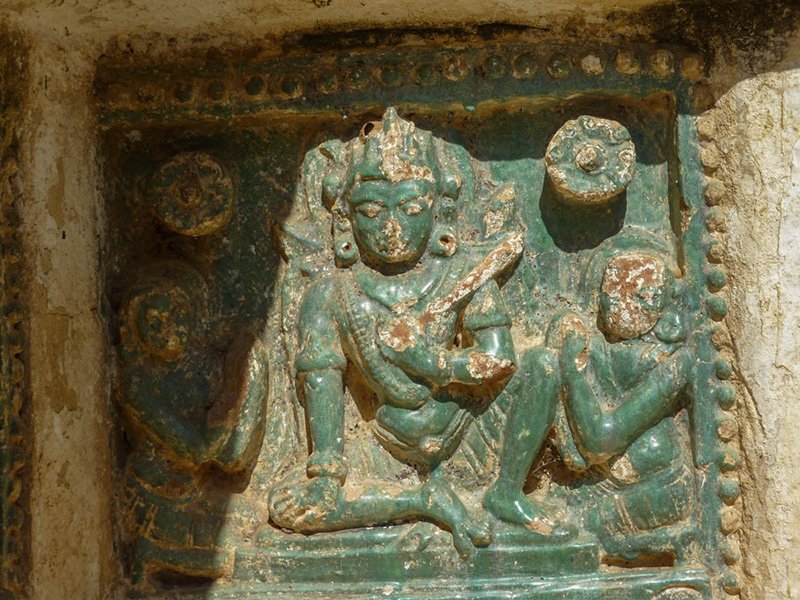

Mara’s Demons in Procession – west face.
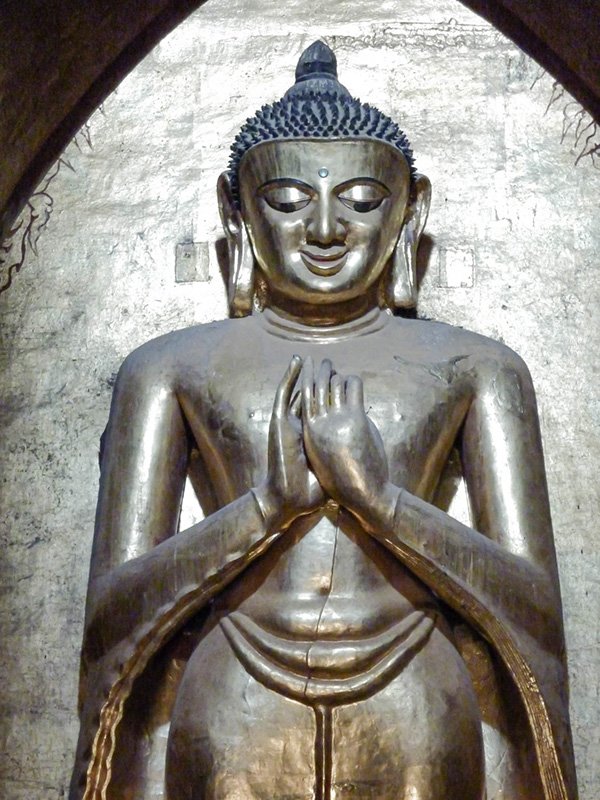
Ananda Temple – South Buddha image (Buddha Kassala)
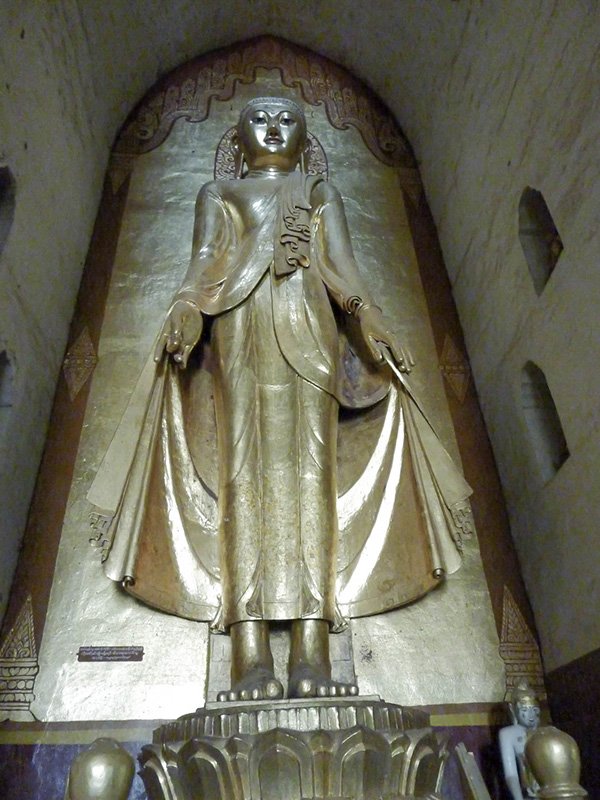
Ananda Temple – East face Buddha image (Buddha Konagamana)
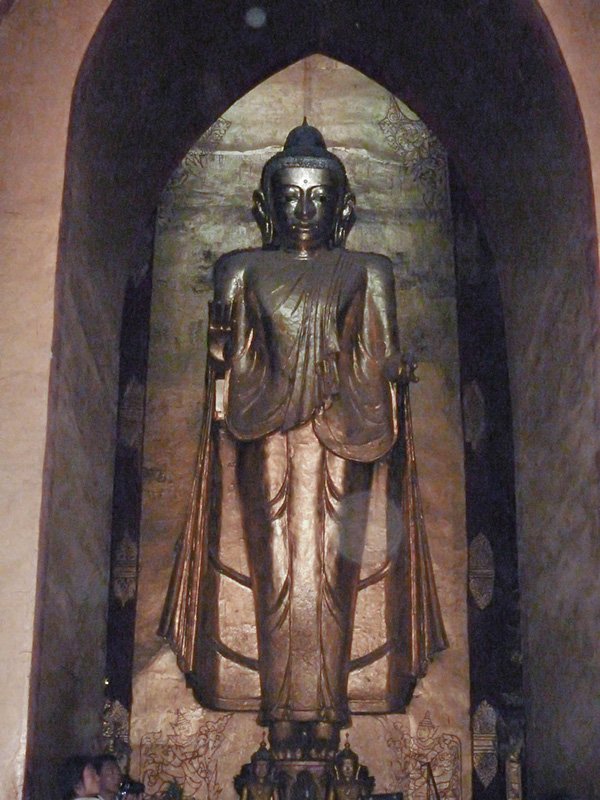
Ananda Temple – West Buddha image (Buddha Gotama)
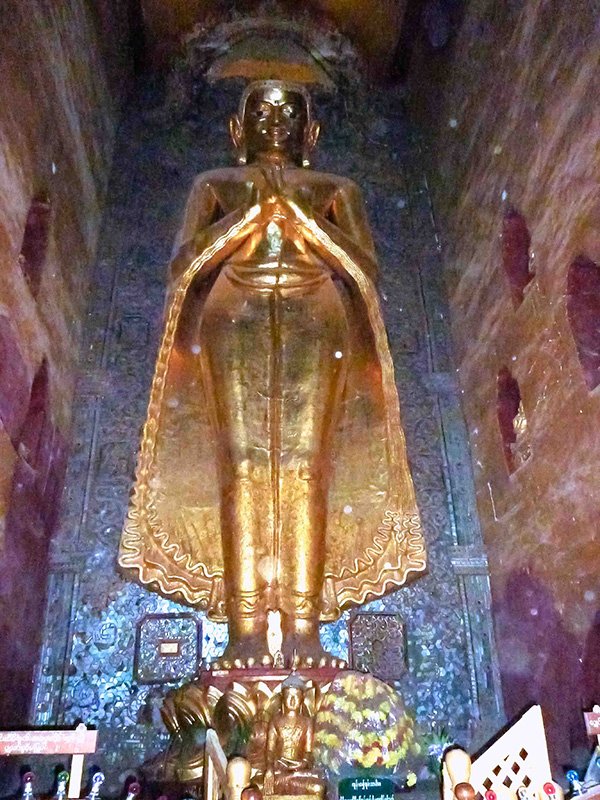
Ananda Temple – North Buddha image (Buddha Kakusandha)
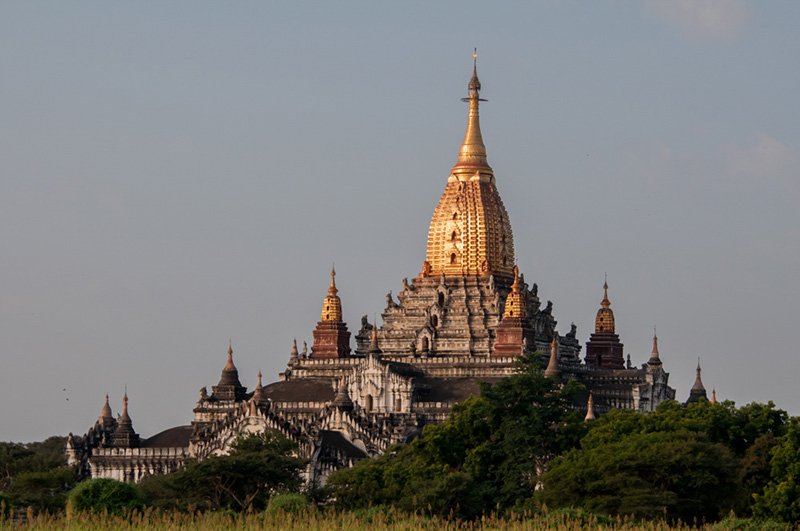
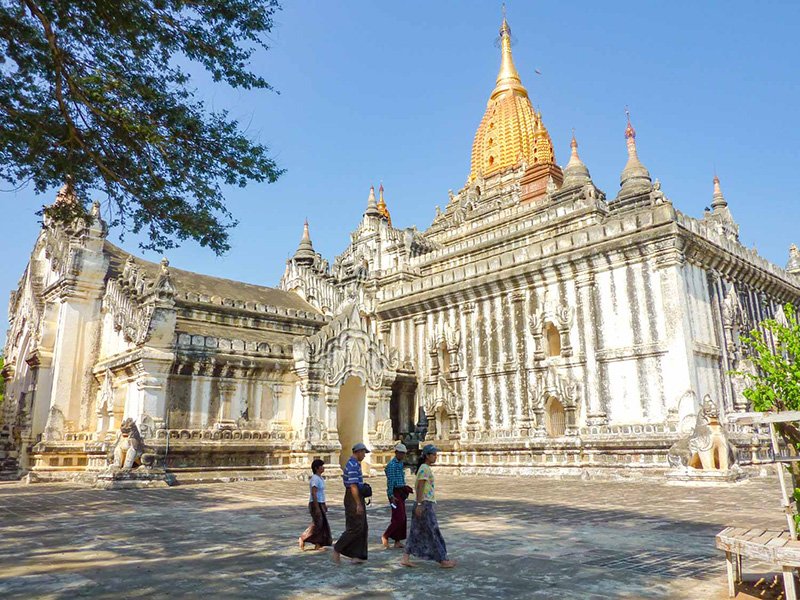


I have heard that on one occasion the Blessed One was living among the Kurus. Now, the Kurus have a town named Kammāsadhamma. There Ven. Ānanda approached the Blessed One and, on arrival, having bowed down to him, sat to one side. As he was sitting there he said to the Blessed One: “It’s amazing, lord, it’s astounding, how deep this dependent co-arising is, and how deep its appearance, and yet to me it seems as clear as clear can be.”
(The Buddha:) “Don’t say that, Ānanda. Don’t say that. Deep is this dependent co-arising, and deep its appearance. It’s because of not understanding and not penetrating this Dhamma that this generation is like a tangled skein, a knotted ball of string, like matted rushes and reeds, and does not go beyond transmigration, beyond the planes of deprivation, woe, & bad destinations. – From DN15, Maha Nidana Sutta (The Great Causes Discourse) Read more…
References:
Ancient Pagan: Buddhist Plain of Merit, Donald Stadtner, River Books, 2013
Pagan: Art and Architecture of Old Burma, Paul Strachan, Kiscadale Publications, 1989
Guide to Bagan Monuments by Min Bu Aung Kyaing, U Zaw Min Aye (Zaw Press), 2007
Inventory Of Monuments In Bagan, Pierre Pichard, UNESCO, 8 volumes, 1992-2001
